

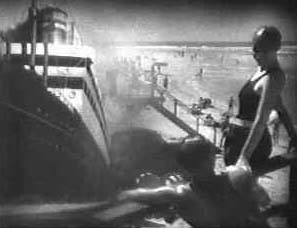
Sunrise: A Song of Two Humans is not only Murnau's greatest film, I also believe that it has to be counted among the most significant films of the cinema's first hundred years. It is an emotional and artistic tour de force, a blend of pathos and studio realism illustrated by a camera that knows no bounds.
Its story is simple; its images and movement are breathtaking. Like many of Murnau's films I can find no better way to describe it than dream-like. Although this dream has narrative order and narrative sense, it moves from scene to scene like a dream, like a silent walk through a pile of leaves, like a fog that ushers in the day but tickles you by withholding it.
Murnau subtitled this film, his first work in America, a song. Referring to a film as a musical composition is not unique to Sunrise -- after all, Nosferatu was a symphony. And while Nosferatu weaves a symphonic fabric, Sunrise is indeed a song. Its tale is trite and unoriginal, but the means of the telling is unique and stays with you like a remarkable tune.
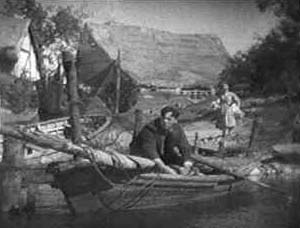
On the surface, Sunrise is about a man who cheats on his wife and attempts to murder her, but finds himself unable to, though chance nearly does it for him. In this respect it has borrowed heavily from Dreiser's An American Tragedy, though another story is claimed as the source. But saying that Sunrise is about a man cheating on his wife is like saying that Dvorak's New World Symphony is about cowboys and Indians.
Sunrise is the cinema itself, in that it expresses itself in a way that only a film can. It does not try to translate a book or a play or a piece of music or a building into a film, it is a film and a film alone. It uses all the unique abilities of the silent film to create an idea, a sensation, something lasting that you take with you after you finish viewing it. Sunrise is the supreme silent film, the highest peak of an art form that is no longer actively used.
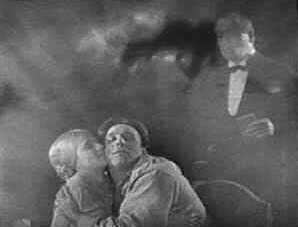
Sunrise is like many other films, in that there is a story and there are characters and there are settings. There are intertitles in this film, but they act as if they were characters as well. When the city woman suggests to the man that he could drown his wife, the titles drown as well.
The film is extra-luxurious in its use of superimposition. The film begins when a postcard comes to life, and the image of a smoke-belching train dissolves into tableaus of sailing ships and bathers, finally ending on an excursion ship heading to the small community where our two main characters live. Later, when the man fights the demons of his obsession with the other woman, we see her superimposed twice, once large above him and smaller below him as if leaning up to kiss him. When the couple nods off for a moment at a dance hall, angels with violins spin around above their heads.
The film plays around with conceptions of city and country. Although at first the city represents a dark temptation, it is also what brings the man and woman together again. The country is idealized, but it is also portrayed realistically, as a place where you may not have to sail yourself through a crowd but you do have to face brutal nature directly.
The film's city is an image that I have long loved, and that has come to represent to me some kind of ideal city, or overarching notion of city. As someone who grew up in smaller places, I identified with the country couple's reaction to the city, and how Murnau built the city set to make that reaction concrete. The city's streets are extra wide, and there is a great concentration of activity on them, from masses of pedestrians to streetcars, horses and cars.
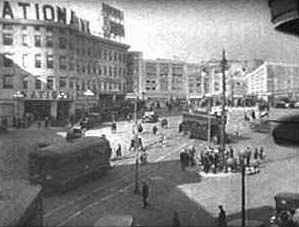
There is an indescribable beauty in these images, these sets. The city portrayed is as everyplace, and a no-place. It feels vaguely European but also seems American. It is overwhelming and yet comforting, a silent city in a silent film but as cacophonous as any actual city with actual audio could be.
Sunrise is a Hollywood film made as if it never left the mind of its maker. American filmmaking practices result in a finished product that is often so far from its potential but Sunrise is different from that. It is a work of love and dream imagined by a human being and somehow born and grown of technology and persistence. We will never again see a film like Sunrise, a film made with all the resources and money of a Hollywood studio and all the imagination and potential of an incredibly gifted individual.
Sunrise shared the first ever best picture Academy Award with Wings, taking the honors for Artistic Achievement. Janet Gaynor received the first Best Actress Award for her work in the film and Karl Struss and Charles Rosher shared the Best Cinematography Academy Award.
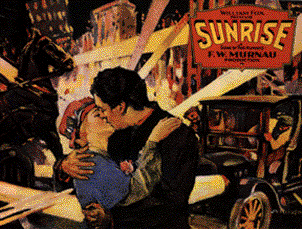 Directed by
F.W. Murnau
Directed by
F.W. MurnauBack to Sloppy Films
Copyright © 1997 John Akre
http://www.sloppyfilms.com/murnau/sunrise.htm